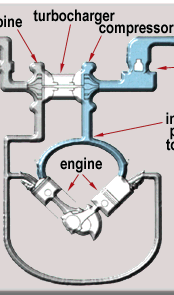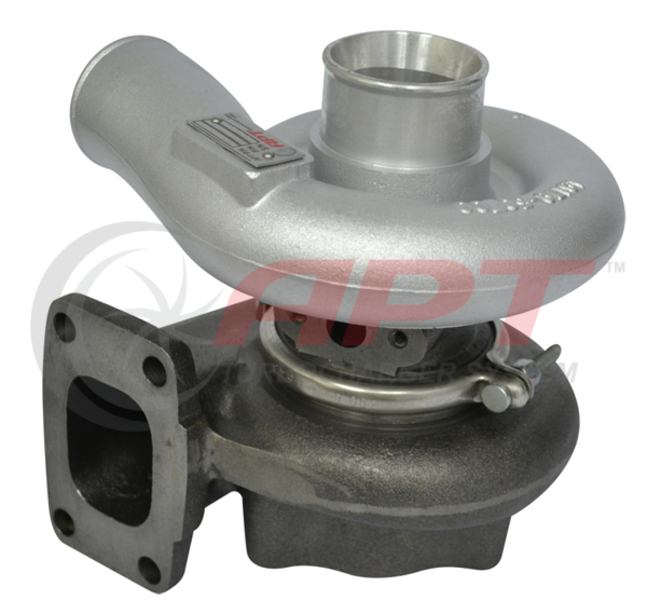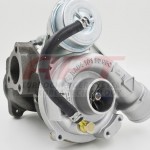Turbos provide enhanced fuel economy and performance. A turbo is a basic “air pump” that pushes a volume of air into the engine, which increases the power output. This turbo is driven by a turbine in the exhaust system, connected by a direct shaft to an impeller in the intake system. The more exhaust that flows, the more air is pumped into the engine. In most automotive and some other applications, a wastegate is provided which opens as intake system pressure is raised to a preset level by the turbo. This device prevents an overboost from damaging the engine.



As the turbo pumps and compresses air into the engine, the temperature rises in the engine. To help to reduce this temperature and keep the turbo efficient, many manufacturers have been adding intercoolers. An intercooler is a radiator for air, and is usually in front of the main radiator. Another step some turbos use to help add to the life of the unit is water-cooling. This is done by connecting the turbo to the coolant system. By doing this, the turbo operating temperature is limited to the temperature of the cooling system. This also protects the bearing assembly from excessive exhaust temperature.
Turbos can operate at very high RPMs, depending on the vehicle, make and model. It is very important to keep the oil supply entering the turbo full and clean to ensure proper lubrication. If the oil supply drops too low or becomes contaminated with debris, it is highly likely that the turbo unit may become damaged.
One of the most common causes for turbo failure is a lack of lubrication, or abrasive material in the oil supply. Failure can also occur from heavy particles that enter the air stream from the intake. To minimize this type of failure, always check your air filter and ducting to make sure it is clean and functioning normally. Another type of turbo failure can be caused by objects from within the engine leaving through the exhaust system. This could consist of carbon, broken engine parts, bolts, nuts, rust, etc.
To help minimize the risk of turbo failure, here are some helpful tips you can follow:
Change the oil in your vehicle at least every 3000 miles.
Always use oil that is recommended by the manufacturer of the engine.
Do not use cleaning additives, these may loosen particles and other debris.
Always let the engine warm up when you start. A recommended time is 30-60 seconds in warmer weather, and longer as the temperature drops.
Remember, cold oil is thick, and doesn’t flow as freely as warm oil.
Do not “rev” your engine during the warm up, the turbo may not have had enough time to receive a full supply of oil.
When stopping, let the engine idle for a period. The faster you were driving, the longer your idle down time should be.
Remember, the turbo is free spinning at high RPMs, and when the engine is shut off, so is the oil supply. If the engine is not properly idled down, the turbo may experience bearing damage.
When you do change the oil, remember to prime the filter and crank the engine without starting until full oil pressure is observed





